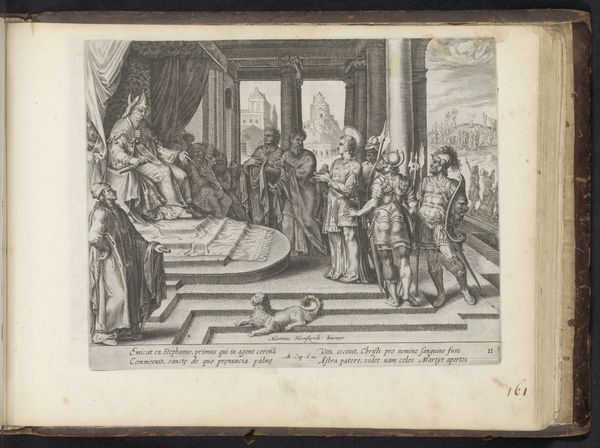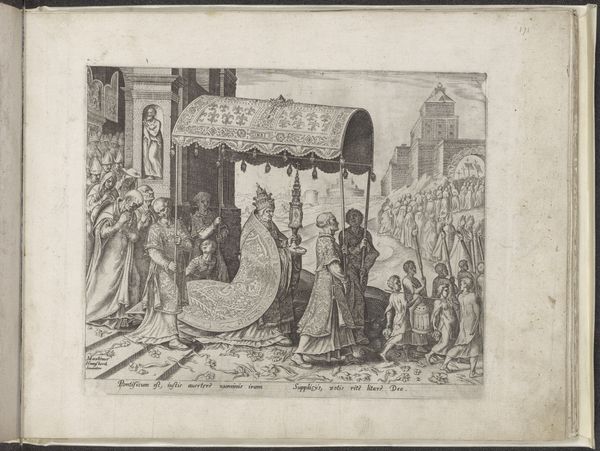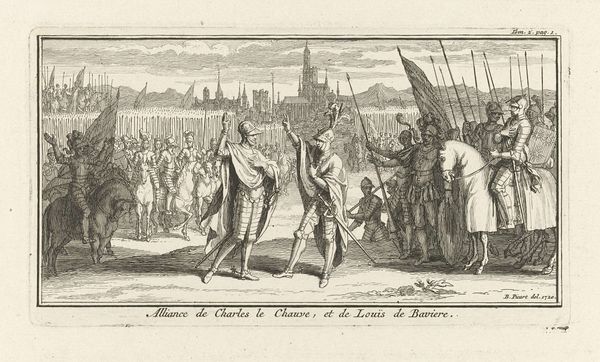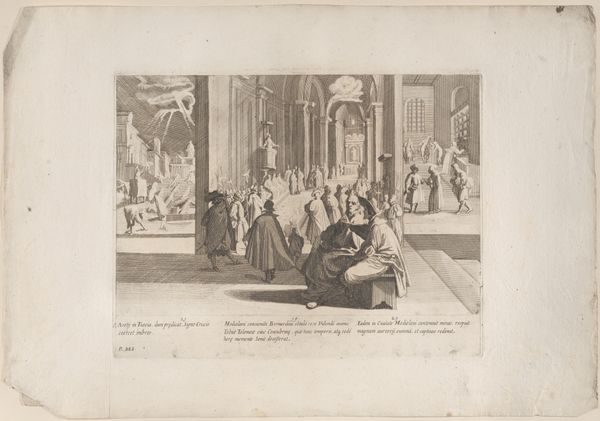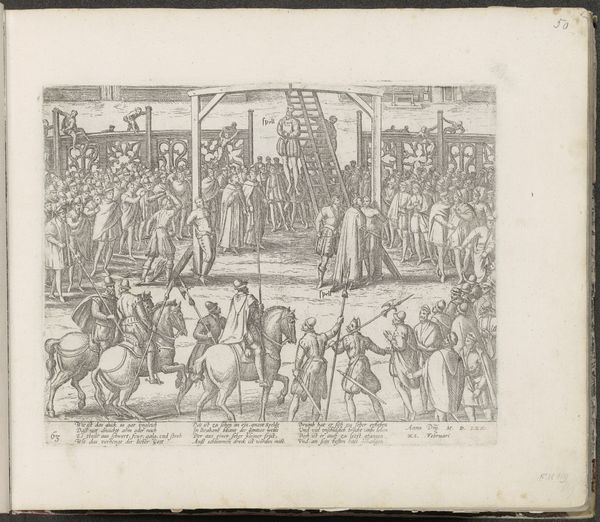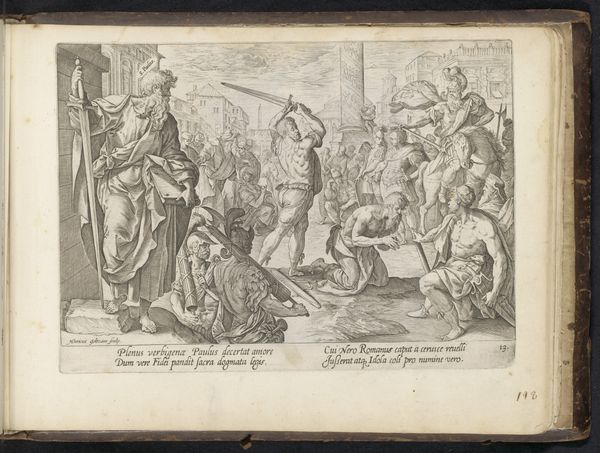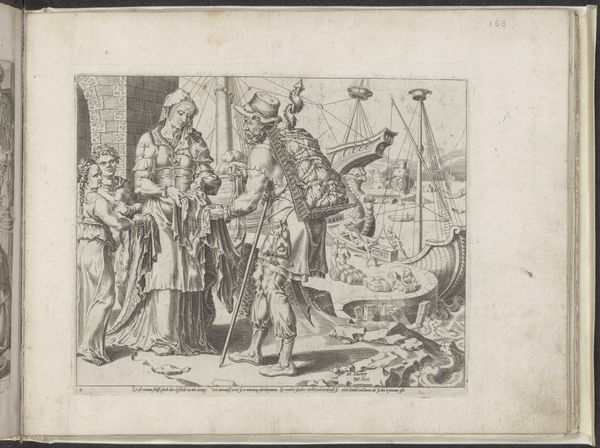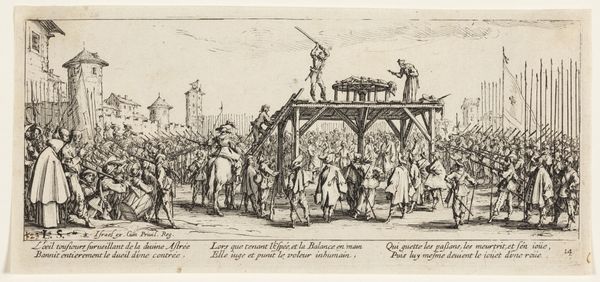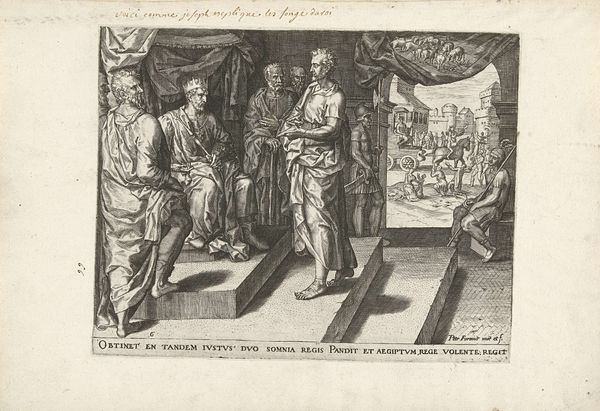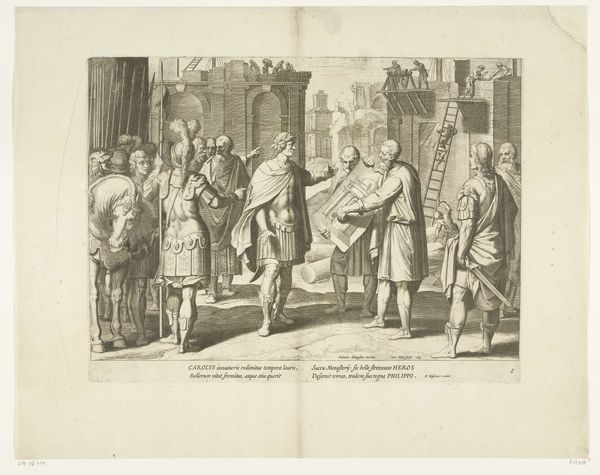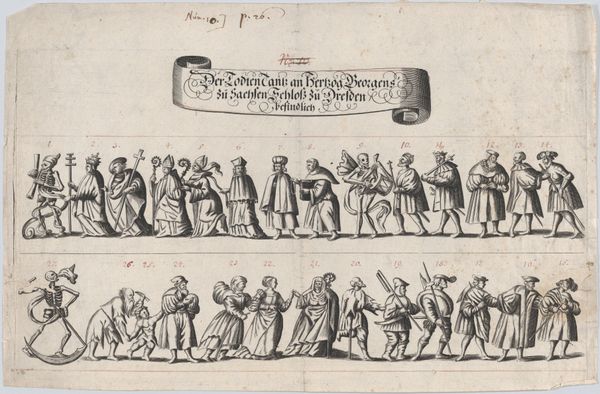
Théologie à la Turque.–the Pale of the Church of Mahoment 1799
0:00
0:00
drawing, print, engraving
#
drawing
#
neoclacissism
# print
#
caricature
#
history-painting
#
engraving
Dimensions: plate: 9 3/8 x 13 7/8 in. (23.8 x 35.2 cm)
Copyright: Public Domain
Curator: Today, we're examining "Théologie à la Turque," an engraving crafted in 1799 by James Gillray. This work, presently residing at the Metropolitan Museum of Art, employs printmaking techniques to convey its message. What's your first take on this image? Editor: Well, visually, it feels rather stiff, doesn't it? Almost theatrical. All those figures lined up, those books brandished about! It evokes a slightly sinister pantomime; everyone seems a caricature of… something. The setting beyond hints at ancient grandeur but there's so much activity here...it makes it hard to tell. Curator: Gillray was known for his caricatures and satirical prints, often targeting political figures and social customs. Considering the title, “Theology in the Turkish Style,” and the subtitle regarding the Coptic Mayor of Cairo, what comes to mind in relation to 18th-century material production? Editor: Right, thinking about printmaking at this time—it meant that imagery, even controversial political commentary like this, could circulate relatively widely. And looking closer... the procession is strange. Is the mayor being celebrated, ridiculed, punished? Curator: That's a keen question. Gillray was likely commenting on the political tensions involving Napoleonic campaigns. His drawings provide insight into social attitudes of the time. Consider the tools of engraving – metal plates, etching acids - what does that tell us? Editor: So the physical labor is part of the artwork's "content," literally embedded in its being. The very act of making allows his opinion to have reach, to become more material and available. It speaks of dissemination. This one, while grotesque, almost holds that sense of freedom—the power to speak when the state cannot. It seems to celebrate those means! Curator: Absolutely! And each impression produced contributes to shaping public consciousness regarding cultural tensions within Britain, specifically anxieties about imperialist operations and interactions with other cultures. Gillray’s use of visual rhetoric acts as an artefact representing political undercurrents during times marked by war, colonial efforts, economic transitions Editor: Yes, it really is fascinating when one starts thinking about these things materially: it's not *just* some artist's opinion etched onto a plate but an index pointing towards so many other historical forces at work beyond! I'd not previously known what all these symbols represented together in quite this manner or fashion! Curator: It does indeed, reveal broader context through its medium, presentation, technique and material underpinnings!
Comments
No comments
Be the first to comment and join the conversation on the ultimate creative platform.
